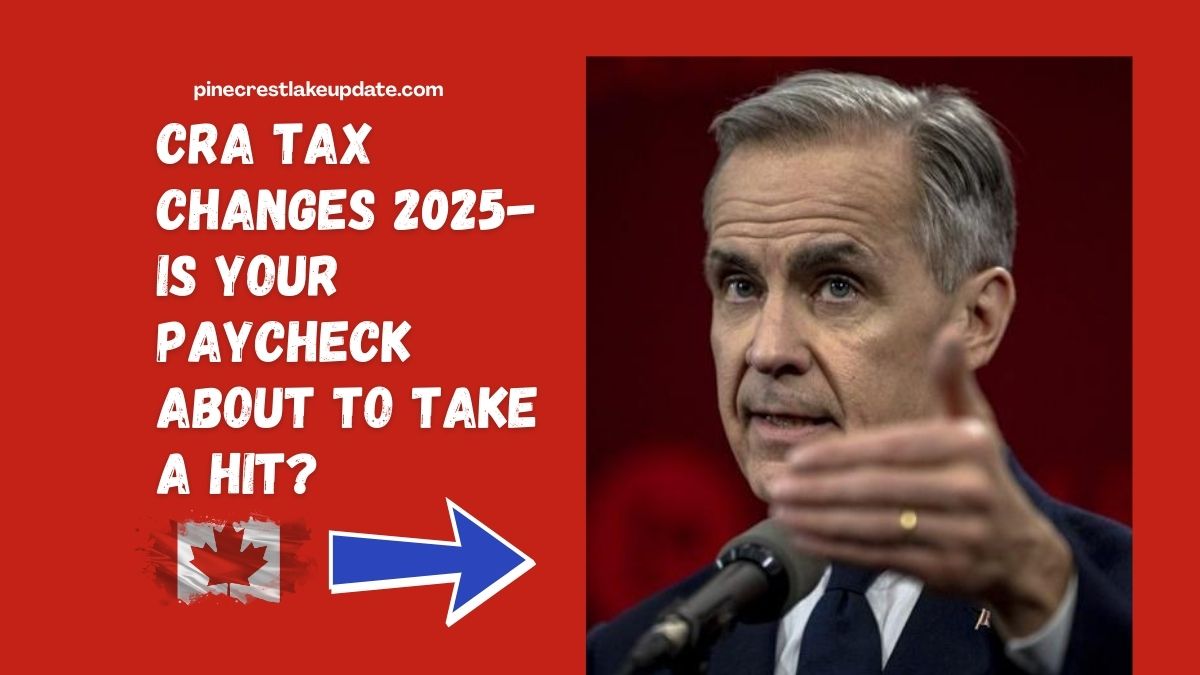The Canada Revenue Agency (CRA) has introduced significant tax changes for 2025 that will impact everything from paychecks to investments and long-term financial strategies.
These updates include revisions to federal and provincial tax brackets, new Canada Pension Plan (CPP) contribution rules, and a proposed increase in the capital gains tax inclusion rate.
Whether you’re a worker, self-employed, or an employer, it’s essential to understand these changes and how they will affect your finances. Below is a breakdown of what to expect in 2025 and how you can prepare for these changes.
Federal Tax Changes: What’s New?
The federal income tax brackets have been adjusted to account for inflation, ensuring your earnings are not unfairly taxed due to rising prices.
For 2025, all five federal tax brackets have been increased by 2.7%. This is good news for Canadians, as it helps preserve purchasing power.
Here are the new federal tax rates:
| Income Bracket | Tax Rate |
|---|---|
| Up to $57,375 | 15% |
| $57,376 to $114,750 | 20.5% |
| $114,751 to $177,882 | 26% |
| $177,883 to $253,414 | 29% |
| Over $253,414 | 33% |
The Basic Personal Amount (BPA), which is the tax-free allowance, has also seen an increase. It now ranges from $14,538 to $16,129, depending on your income level. However, for high-income earners, the BPA is reduced, with the minimum being $14,538.
CPP Contributions: New Tier for High Earners
The Canada Pension Plan (CPP) is undergoing an enhancement in 2025, designed to improve retirement benefits for Canadians, particularly mid- to high-income earners. A new earnings ceiling, known as the Year’s Additional Maximum Pensionable Earnings (YAMPE), has been introduced:
| Earnings Range | Contribution Rate |
|---|---|
| $71,300 to $81,200 | 4% (employees) |
| $71,300 to $81,200 | 8% (self-employed) |
If your income exceeds $71,300, you will now contribute an additional 4% on earnings between $71,300 and $81,200. If you are self-employed, the contribution rate is 8%, as you cover both the employer and employee portions.
Provincial Tax Changes
Several provinces have made updates to their tax structures for 2025:
- Manitoba: The Basic Personal Amount (BPA) will be reduced for individuals with net incomes between $200,000 and $400,000. The BPA phases out entirely for incomes over $400,000, resulting in higher taxes for high-income earners.
- Nova Scotia: In a bid to combat inflation, Nova Scotia is introducing annual indexing for its provincial tax brackets and non-refundable tax credits. This helps ensure that the impact of inflation on taxes remains minimal.
- Prince Edward Island (PEI): PEI has increased its BPA from $13,500 to $14,250 and made adjustments to its tax brackets to align with inflation. This provides some relief for middle-income families.
Capital Gains Tax: A Look Ahead to 2026
One of the most significant tax changes on the horizon is the capital gains tax increase, which will take effect on January 1, 2026. The capital gains inclusion rate is set to rise from 50% to 66.67% for individuals with over $250,000 in annual capital gains. This change will also apply to all capital gains earned by corporations and most trusts.
This adjustment will impact investors, business owners, and real estate owners who are planning to sell valuable assets. To mitigate the impact, individuals may want to consider using Tax-Free Savings Accounts (TFSA), Registered Retirement Savings Plans (RRSP), or spreading gains over multiple years to stay under the threshold.
What Should You Do Now? Practical Steps
To stay ahead of the 2025 tax changes, here are a few practical steps you should take:
- Review Your Pay Stub: Starting in January 2025, check your pay stub to see how the updated federal and provincial tax rates, along with the CPP changes, are impacting your net pay.
- Use the CRA Payroll Deductions Online Calculator: The CRA offers a Payroll Deductions Online Calculator (PDOC) that can help you calculate deductions and understand the new tax rates.
- Preemptive Tax Planning: If you expect large capital gains in the near future, meet with a tax advisor to explore strategies such as spreading gains over multiple years or utilizing available deductions.
- Stay Informed: Keep an eye on official CRA updates or subscribe to alerts to stay informed about any additional changes.
- Employers Should Update Payroll Software: Ensure your payroll systems are updated to reflect the new tax tables and CPP contribution formulas starting in January 2025.
The CRA tax changes coming in 2025 are significant and will affect Canadians at all income levels. With inflation adjustments, new CPP contributions, and the looming capital gains tax increase, it’s essential to understand these changes and plan accordingly.
By reviewing your tax situation, using available tools like the CRA’s Payroll Deductions Calculator, and staying informed, you can make sure you’re well-prepared to navigate the new tax landscape. Proper planning will not only help you optimize your tax situation but also secure better financial outcomes in the future.
FAQs
How will the new CPP contribution tier affect my retirement savings?
The new CPP contribution tier will affect Canadians earning above $71,300, requiring additional contributions between $71,300 and $81,200. This will help improve retirement security for higher earners.
When will the capital gains tax increase take effect?
The proposed capital gains inclusion rate increase will take effect on January 1, 2026, with the new rate being 66.67% for individuals with gains over $250,000 annually.
How do the provincial tax changes affect me?
Changes in Manitoba, Nova Scotia, and PEI may affect high-income earners and middle-income families. Nova Scotia will index tax brackets, and PEI will raise the BPA. Manitoba will reduce the BPA for individuals earning over $200,000.
